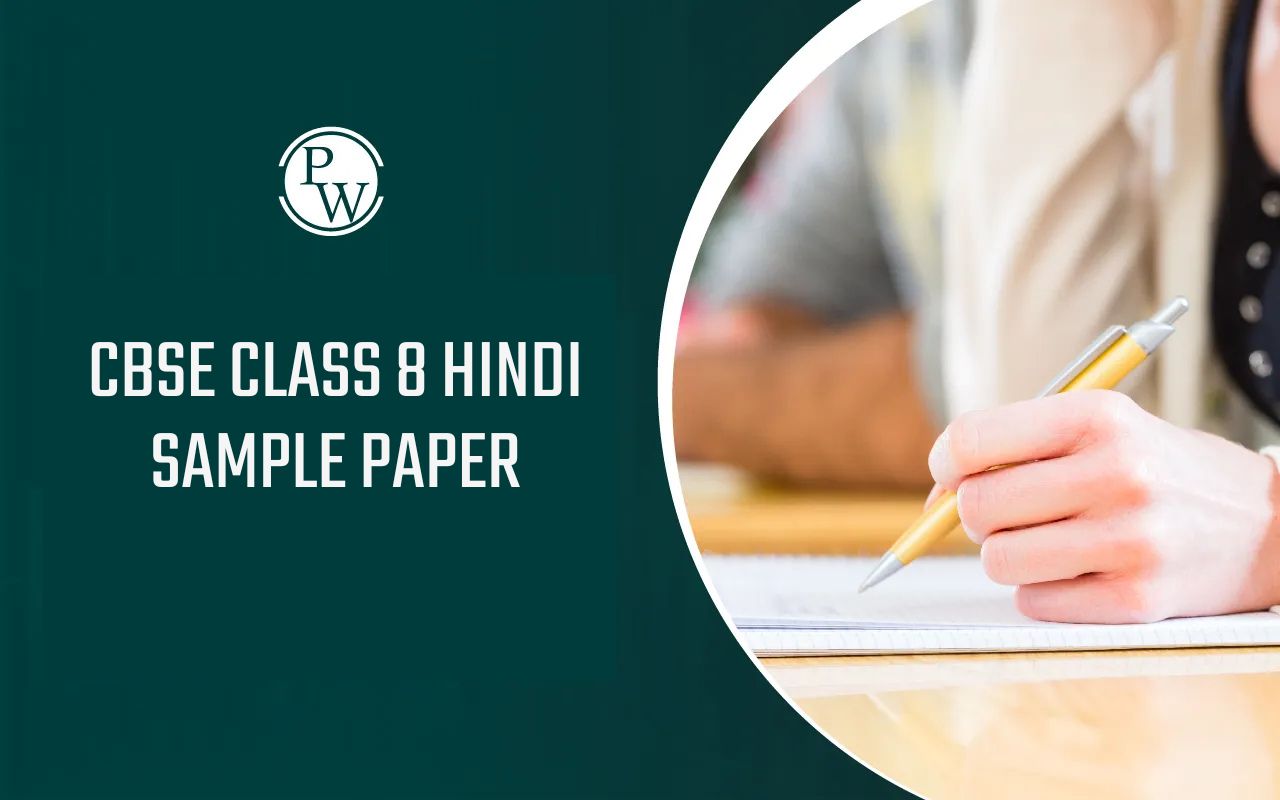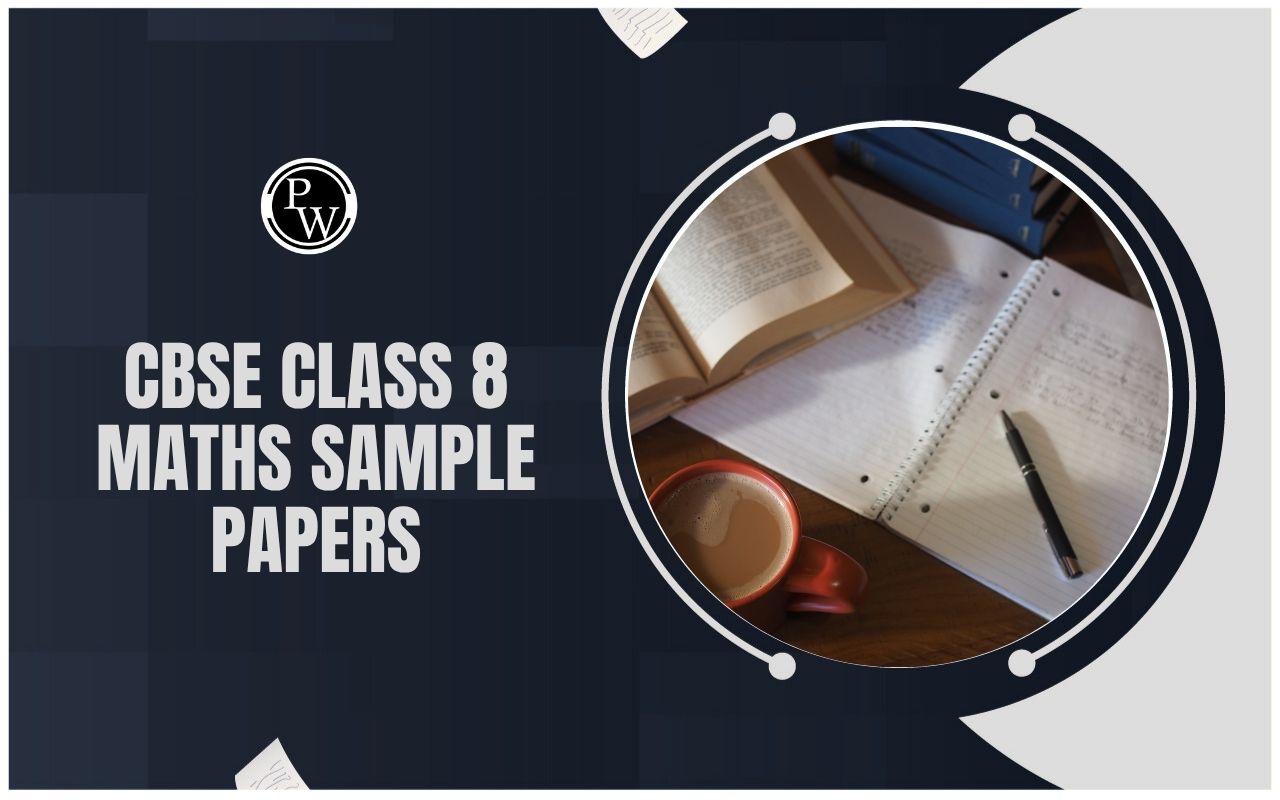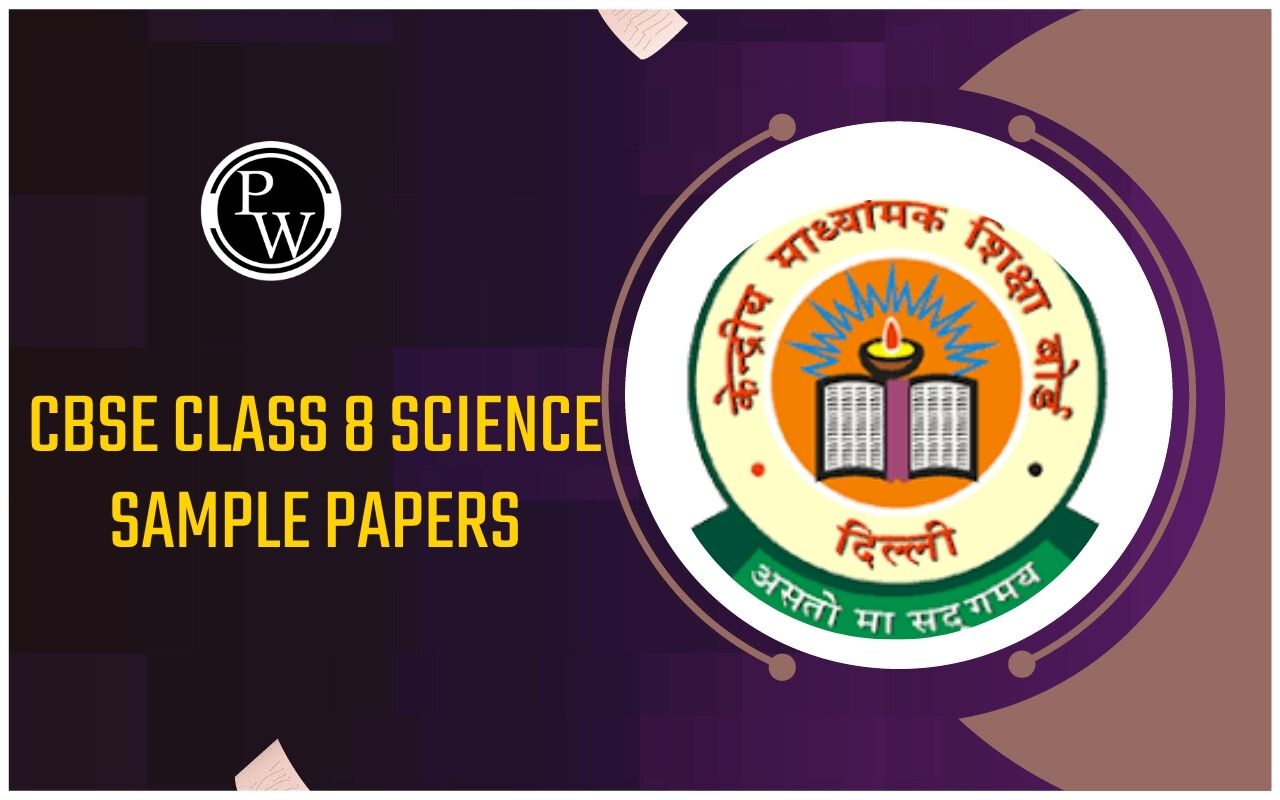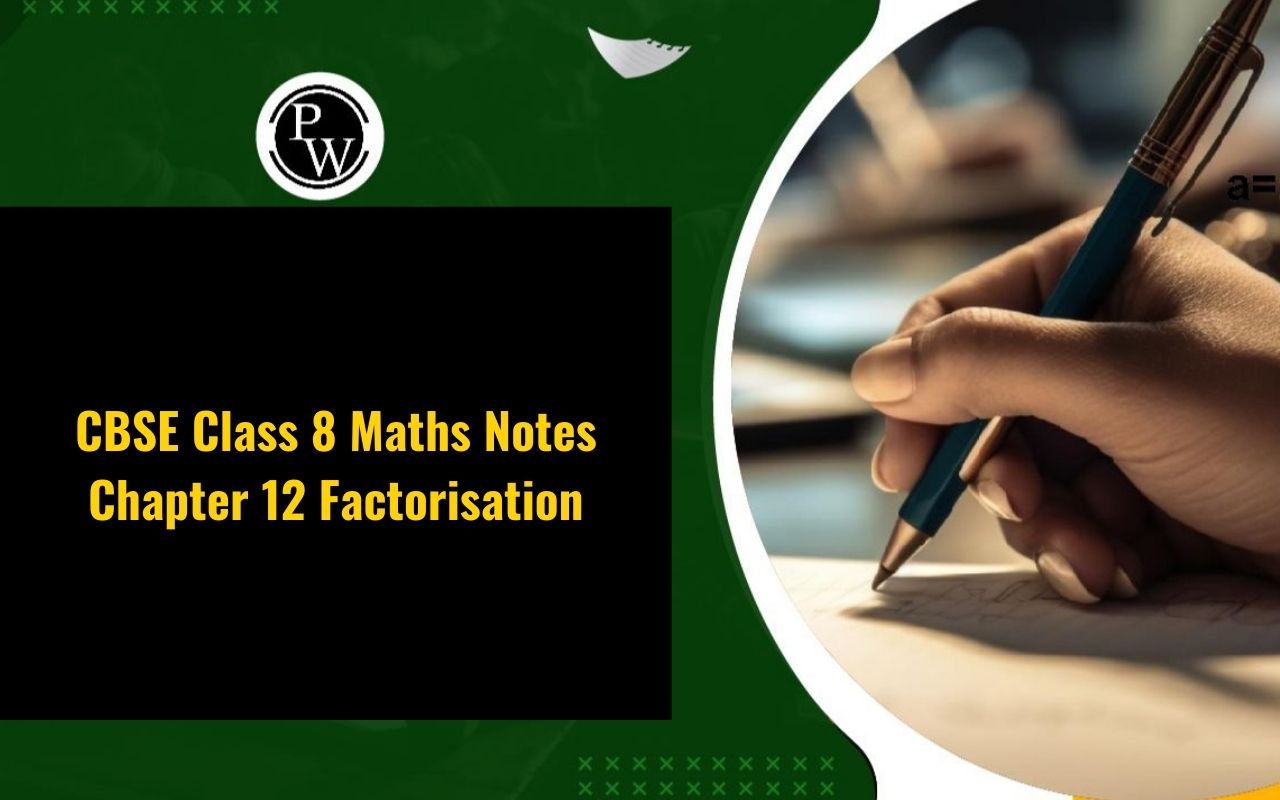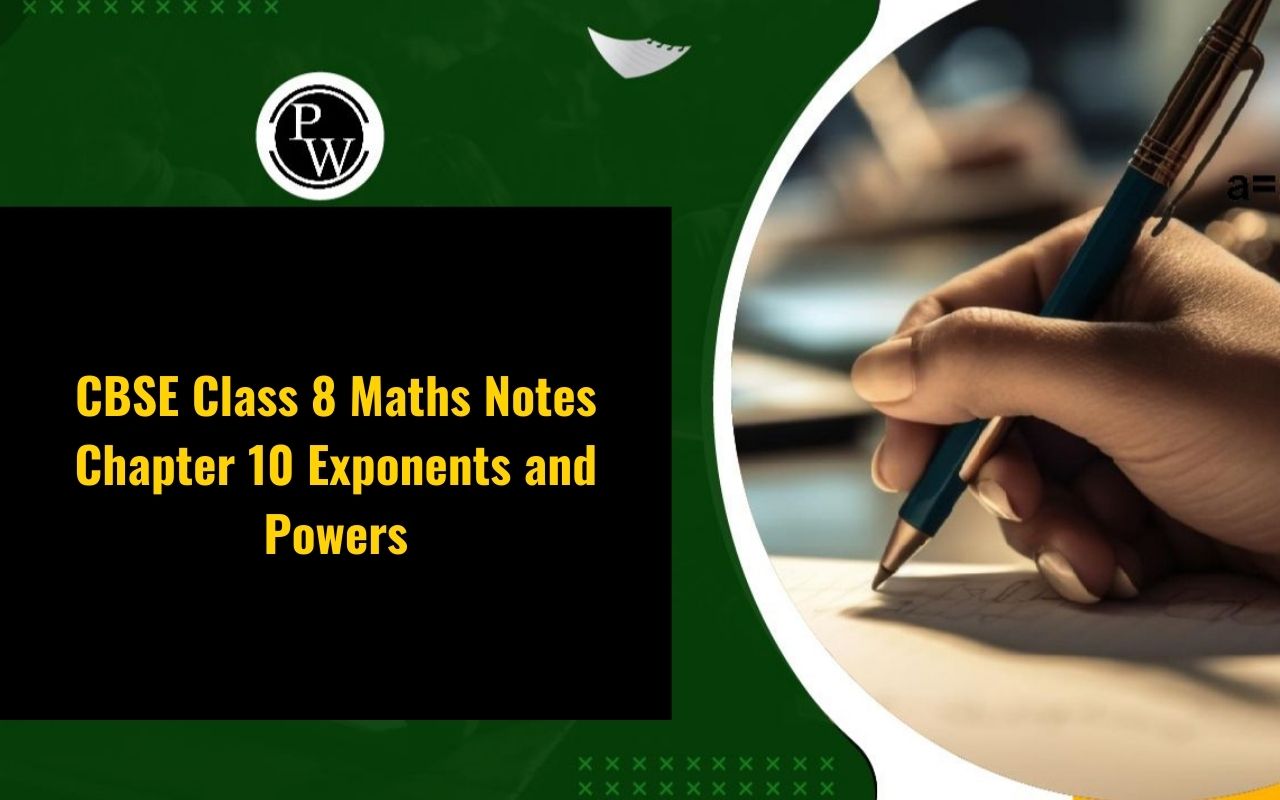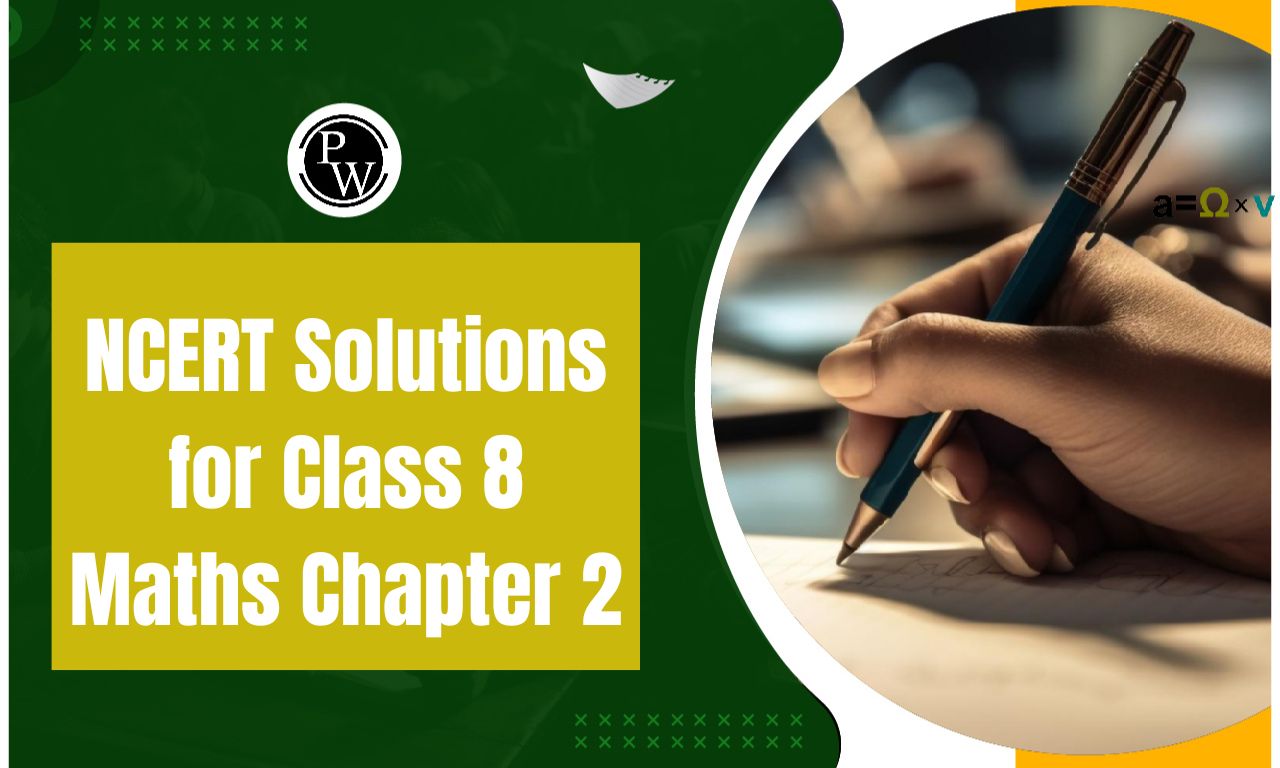
NCERT Solutions for Class 8 Science Chapter 3 Synthetic Fibres and Plastics are important study materials that help students thoroughly understand the topic. The solutions provided in the PDF format help clarify doubts and offer a structured approach to learning, which is helpful for students to prepare effectively for the exams.
Using these NCERT Solutions, students can effectively prepare for each question given at the end of the chapter and improve their performance in the exam. The downloadable PDF format prepared by the experts, considering the latest CBSE Class 8 Science Syllabus and guidelines, allows students to access the solutions anytime, anywhere. These solutions are invaluable for mastering the subject matter, boosting confidence, and achieving excellent exam results.NCERT Solutions For Class 8 Science Chapter 3 Overview
NCERT Solutions for Class 8 Science Chapter 3 provides detailed information about the chapter. Synthetic fibres are man-made and created by combining various chemicals and raw materials, such as petrochemicals. Examples of synthetic fibres include nylon, acrylic, polyester, and rayon. Here are the four main types of synthetic fibres:- Rayon: Made from wood pulp and dyed in different colors, rayon is often called artificial silk due to its similarity to silk. It is more affordable than natural silk.
- Nylon: The first commercially produced synthetic fibre, nylon is made from coal, water, and air. It is very strong and has a silk-like texture.
- Polyester: A widely used synthetic fibre, polyester is made from repeating units of a chemical called esters and is popular in the textile industry.
- Acrylic: Known as artificial wool, acrylic is cheaper than natural wool and can be dyed in various colours, making it a popular alternative.
NCERT Solutions For Class 8 Science Chapter 3 PDF
The NCERT Solutions for Class 8 Science Chapter 3, "Synthetic Fibres and Plastics," PDF is provided below. Students can access the PDF by simply clicking on the link given below. After downloading the PDF, students can study the detailed explanations, examples, and solutions to all chapter-end questions anytime and anywhere. This resource is invaluable for understanding the chapter thoroughly and preparing effectively for exams.NCERT Solutions for Class 8 Science Chapter 3 PDF
List of the Topics Covered in NCERT Class 8 Science Chapter 3 Synthetic Fibres And Plastics
Introduction to Synthetic Fibres and Plastics: This section introduces synthetic fibres and plastics, explaining their types, properties, and applications. Natural and Synthetic Fibres: This section compares natural and synthetic fibres, highlighting the benefits and drawbacks of each. Manufacture of Synthetic Fibres: This section outlines the methods used to produce synthetic fibres, including polymerization and spinning. Properties of Synthetic Fibres: This section describes the fundamental properties of synthetic fibres, such as strength, elasticity, and durability. Uses of Synthetic Fibres: This section explores the various applications of synthetic fibres, including their use in clothing, carpets, and ropes. Plastics: This section examines the different types of plastics and details their properties and common uses. Problems Caused by Plastic Waste: This section addresses the environmental issues caused by plastic waste, such as pollution and ecological harm.NCERT Solutions For Class 8 Science Chapter 3 Exercise Questions
- Explain why some fibres are called synthetic.
- Mark the correct answer.
- Fill in the blanks with appropriate words.
- Give examples that indicate that nylon fibres are solid.
- Parachutes and rock climbing ropes are made of nylon.
- Sports gear, like rackets, is also made from nylon.
- Nylon is used for seat belts, fishing nets, and tire cords.
- Explain why plastic containers are preferred for storing food.
- Explain the difference between thermoplastic and thermosetting plastics.
| Thermosetting plastics | Thermoplastics |
| Thermosetting plastics break if you try to bend them | Thermoplastics can be bent easily. |
| Heating thermosetting plastics does not soften them; they cannot be reshaped after moulding. | Heating thermoplastics softens them, allowing them to be moulded and reshaped easily. |
- Explain why the following are made of thermosetting plastics:.
- a) Thermosetting plastics are used for saucepan handles because they don't conduct heat or soften when heated.
- b) Bakelite is a thermosetting plastic that doesn't conduct heat or electricity, so it's used for making electric plugs, switches, and plug boards. 8. Categorise the materials of the following products into ‘can be recycled’ and ‘cannot be recycled’.
| Can be Recycled | Cannot be Recycled |
| Plastic chairs | Cooker handles |
| Plastic bowls | Electrical switches |
| Plastic toys | Telephone instruments |
| Plastic covering on wires |
- Rana wants to buy shirts for summer. Should he buy cotton shirts or shirts made from synthetic material? Advise Rana, giving your reason.
- Give examples to show that plastics are non-corrosive.
- Should the handle and bristles of a toothbrush be made of the same material? Explain your answer.
- 'Avoid plastics as far as possible'. Comment on this advice.
- Match the terms of column A correctly with the phrases given in column B
| A | B |
| (i) Polyester | (a) Prepared by using wood pulp |
| (ii) Teflon | (b) Used for making parachutes and stockings |
| (iii) Rayon | (c) Used to make non-stick cookware |
| (iv) Nylon | (d) Fabrics do not wrinkle easily |
| A | B |
| (i) Polyester | (d) Fabrics do not wrinkle easily |
| (ii) Teflon | (c) Used to make non-stick cookware |
| (iii) Rayon | (a) Prepared by using wood pulp |
| (iv) Nylon | (b) Used for making parachutes and stockings |
- ‘Manufacturing synthetic fibres is helping conserve forests’. Comment.
- Describe an activity to show that thermoplastic is a poor conductor of electricity
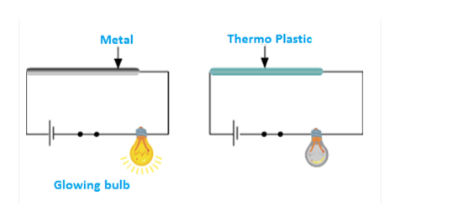 To demonstrate that thermoplastic is a poor conductor of electricity, we need a bulb, wires, a battery, metal, and a plastic pipe.
To demonstrate that thermoplastic is a poor conductor of electricity, we need a bulb, wires, a battery, metal, and a plastic pipe.
- In the experiment, the bulb glows when the circuit is set with the metal conductor because metal is a good conductor.
- However, when the plastic pipe (thermoplastic) replaces the metal, the bulb does not glow, showing that thermoplastic is a poor conductor of electricity.
Benefits of NCERT Solutions for Class 8 Science Chapter 3 Synthetic Fibres and Plastics
There are various benefits of NCERT Solutions for CBSE Class 8 Science Chapter 3 Some benefits are discussed in the points below:- Solutions offer clear explanations and step-by-step answers for textbook questions, aiding understanding.
- They cover all chapters and topics in the NCERT textbook, ensuring comprehensive coverage.
- Practising with solutions helps students prepare for exams by familiarizing them with question types.
- Students can use solutions for self-assessment, checking their answers and identifying areas for improvement.
- Solutions validate correct answers, helping students gauge their understanding and build confidence in their studies.
NCERT Solutions For Class 8 Science Chapter 3 FAQs
What is the strongest fibre called?
Nylon is the strongest fibre as it has an amide bond. It is fully synthetic fibre.
Which is the weakest fibre?
Wool is the weakest natural fibre.
Is fur a natural material?
Fur is a completely fashionable material and a renewable source with exceptional thermal qualities.
What is the major drawback of plastic?
The downsides of plastic are that it can be harmful to animals and people, and it doesn't break down naturally.
What is regarded as artificial silk?
Rayon, an example of synthetic fibre, is often regarded as artificial silk.
🔥 Trending Blogs
Talk to a counsellorHave doubts? Our support team will be happy to assist you!

Check out these Related Articles
Free Learning Resources
PW Books
Notes (Class 10-12)
PW Study Materials
Notes (Class 6-9)
Ncert Solutions
Govt Exams
Class 6th to 12th Online Courses
Govt Job Exams Courses
UPSC Coaching
Defence Exam Coaching
Gate Exam Coaching
Other Exams
Know about Physics Wallah
Physics Wallah is an Indian edtech platform that provides accessible & comprehensive learning experiences to students from Class 6th to postgraduate level. We also provide extensive NCERT solutions, sample paper, NEET, JEE Mains, BITSAT previous year papers & more such resources to students. Physics Wallah also caters to over 3.5 million registered students and over 78 lakh+ Youtube subscribers with 4.8 rating on its app.
We Stand Out because
We provide students with intensive courses with India’s qualified & experienced faculties & mentors. PW strives to make the learning experience comprehensive and accessible for students of all sections of society. We believe in empowering every single student who couldn't dream of a good career in engineering and medical field earlier.
Our Key Focus Areas
Physics Wallah's main focus is to make the learning experience as economical as possible for all students. With our affordable courses like Lakshya, Udaan and Arjuna and many others, we have been able to provide a platform for lakhs of aspirants. From providing Chemistry, Maths, Physics formula to giving e-books of eminent authors like RD Sharma, RS Aggarwal and Lakhmir Singh, PW focuses on every single student's need for preparation.
What Makes Us Different
Physics Wallah strives to develop a comprehensive pedagogical structure for students, where they get a state-of-the-art learning experience with study material and resources. Apart from catering students preparing for JEE Mains and NEET, PW also provides study material for each state board like Uttar Pradesh, Bihar, and others
Copyright © 2025 Physicswallah Limited All rights reserved.
Get App
